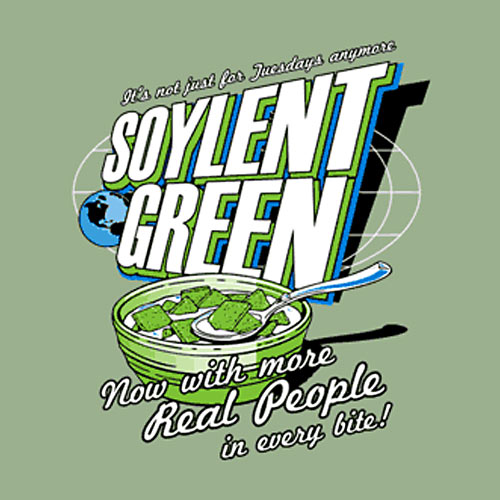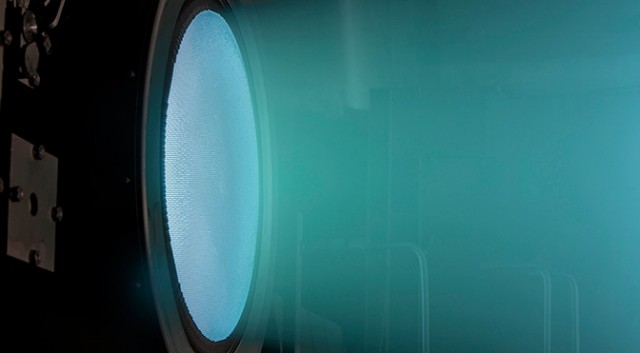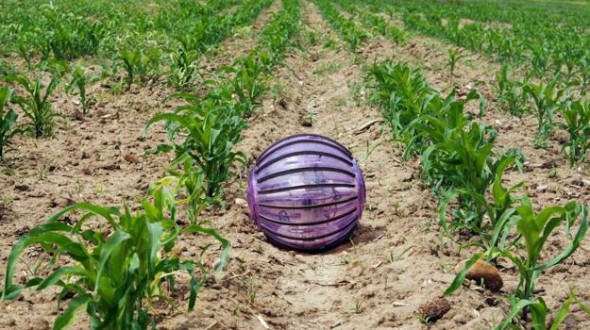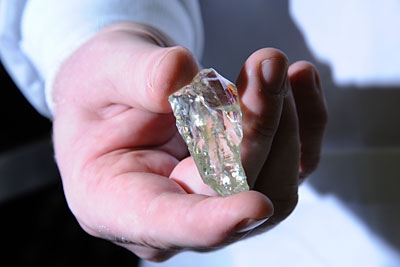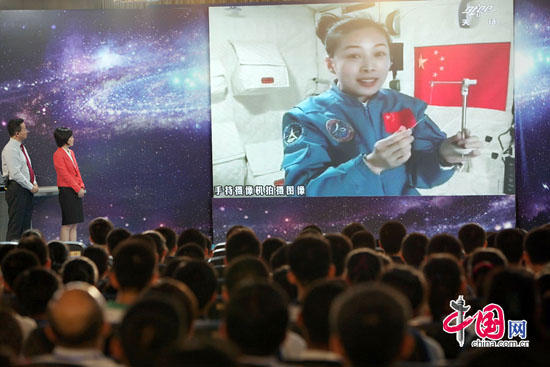Another interesting week in the world of science and technology. We had Chinese taikonauts beaming lessons from space to school children and an American President outlining how his administration intends to save humanity from itself. Stories I have chosen to share with you include:
- NASA Ion Propulsion Engine Achieves World Operations Record;
- And You Thought “Soylent Green” was Just a Movie;
- Nano Sensors Detect Melanomas;
- Robot Sphere Monitors Crop Conditions:
- Are These Crystals the Answer to Safer Nuclear Power Stations?
Advanced Ion Propulsion Engine Sets World Record
The Dawn robotic spacecraft has been using ion propulsion to help it on its journey to the Asteroid Belt. Since leaving Vesta in August of last year it has deployed the engine to push it to its ultimate destination in 2015, the dwarf planet Ceres. But here on Earth another ion propulsion engine has been operating continuously for even longer – a total of 5 1/2 years.
Developed at NASA’s Glenn Research Center in Cleveland, Ohio, the engine goes by the acronym NEXT (NASA Evolutionary Xenon Thruster). Ion propulsion uses electricity generated from solar panels or another power source to heat up xenon propellant which then gets pushed out the back of the combustion chamber to provide thrust. What makes NEXT interesting is it achieves thrust capable of accelerating a spacecraft to 145,000 kilometers (90,000 miles) per hour over a period of time using only 870 kilograms (1,918 pounds) of fuel. A chemical rocket would need 10,000 kilograms (22,000 pounds) to achieve similar results once deployed in space.
A Company with the Name Soylent Raises $800,000 for a Food Replacement Product
It is hard to know whether this is for real or a hoax but a company using the crowdfunding launch tool, Crowdhoster, claims to have raised $800,000 in 3 hours with almost 6,500 people wanting to be the first to get its product called Soylent.
What is Soylent? A customizable total food replacement that comes in powdered form. All you do is mix it with water and it has all the nutritional needs normally derived from balanced eating. On its promotion site the founders state you no longer need to go to a grocery store to buy food. No more cooking and after dinner clean ups. No more eating cute little chickens and calves. And no more unsightly trash from packaging or wasted food. Soylent has a long shelf life. It requires no preparation other than mixing it with water. And its first manufactured batch ships in July. It will be vegetarian, halal and lactose free. Didn’t see a kosher stamp but I guess halal is close enough for those who care.
If you are familiar with the movie Soylent Green and that products “human” content then you may feel a bit on the squeamish side about a company that has chosen this moniker. But lots of people have ponied up $10 or more to be first in line to get Soylent which right now is only available in the United States, Canada, the UK and Mexico. If you miss getting in on this first batch a second is expected to be shipping in the fall. Aah, the shape of things to come and it isn’t even 2022 yet.
Nano Sensors Smell Melanomas
Researchers have known for some time that dogs can smell cancer in a human. That’s because normal and diseased human skin produce airborne chemical signatures in the form of volatile organic compounds or VOCs. Different diseases emit different odors which are only discernible to a keen sense of smell. That’s why some dog breeds whose sense of smell is as much as 10,000 times better than us have been used to detect skin, lung and other forms of cancer.
But what happens if you don’t have a dog around? Well a group of researchers and scientists from the Monell Chemical Senses Center in Philadelphia decided to try and develop a nanotechnology with equivalent capability to a dog’s nose. Reported in next month’s issue of the Journal of Chromatography, the researchers constructed nano-sized carbon tubes which they coated with strands of DNA bioengineered to recognize odor molecules. The result a tool that distinguishes the difference in smell between normal and melanoma cells.
But for those of you who are dog lovers there’s no walking this technology and it won’t play fetch.
If You See This Ball in a Farmer’s Field Don’t Kick It
It is called Rosphere, a globe-shaped robot packed with sensors and a mechatronic internal mechanism that enables it to roll on its own. It is a product born of a research team at the Universidad Politécnica de Madrid. Their goal was to develop a robot that could move over any type of farm terrain collecting data without disturbing the crops. The device can be packed with different sensors for measuring soil moisture levels, ambient temperature, and chemical signatures to assist farmers in improving crop yields. And Rosphere isn’t limited to agricultural applications. It can be used to explore and study almost any terrain. If it gets stuck, remote operators can connect to it and get its mechatronic system moving again.
New Nuclear Fuel May Make Fission Reactors Much Safer
An Idaho State University research team has successfully manufactured a crystalline non-radioactive substitute for uranium or plutonium. It is uniformly structured crystallized uranium oxide with all of its atoms perfectly aligned. It looks a lot like a lump of glass but it has a lot of scientists and engineers working in the nuclear industry excited about its potential to produce a better and safer fuel for future reactors.
Today’s nuclear fuels consist of pellets that have random crystalline structure. This makes them difficult to model for the purpose of studying heat flow through the reactor. With a uniform uranium crystal, however, scientists will be able to study material behaviour in much greater detail and thus manufacture much safer nuclear fuel.
A Postscript
This week I watched and read about the Chinese taikonauts showing school children how water forms a sphere in a vacuum, and how they themselves can float in zero gravity. It was like a flashback to the 1970s when we saw similar demonstrations from space by crews on NASA’s Skylab and the Soviet Salyut modules. And that made me wonder why China isn’t involved like other nations with the International Space Station (ISS) and is having to start back at square one to develop its own human presence in space. Why step back 40 years when the world is about to see the first commercial suborbital and low-Earth orbit human spaceflights?
To me it appears the geopolitics of the old Cold War continue to isolate China so that it has to reinvent its own version of human space travel. Isn’t that a colossal waste of time and money?
When you consider that China in most other ways has become an integral part of our world community why is the country isolated from the rest of us when it comes to space science? After all China holds the largest amount of U.S. securities. It is America’s largest trading partner. It is a healthy competitor to the U.S., Canada and other countries in many fields including supercomputers. But when it comes to space it somehow or other doesn’t get let in the door to join the consortia of nations advancing space science and technology onboard the ISS. Yet when you consider that China is graduating more engineers today than the United States and Russia combined, wouldn’t it make sense to have these graduates contribute to our collective advancement in space?
Just asking!
That’s it for this week. Hope you found my selection of headlines interesting. If you encounter a breaking technology or science story that you feel belongs here, don’t be shy. Drop me a note and I’ll be happy to do the research and writing and acknowledge your contribution along the way.
– Len Rosen
info@21stcentech.com
